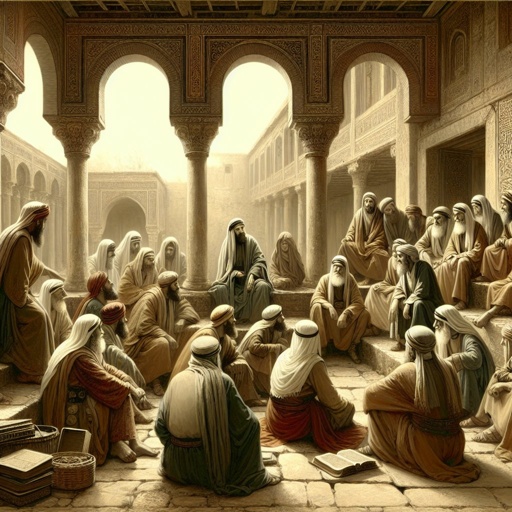Luke 18:1 Artwork
"And he spake a parable unto them to this end, that men ought always to pray, and not to faint;" - Luke 18:1
Explore Luke 18:1 through paintings, pictures, drawings, digital art, illustrations, wallpapers, photos, prints & more.

Luke 18:1 - "And he spake a parable unto them to this end, that men ought always to pray, and not to faint;"

Luke 18:1-8 - "Then Jesus told his disciples a parable to show them that they should always pray and not give up. He said: “In a certain town there was a judge who neither feared God nor cared what people thought. And there was a widow in that town who kept coming to him with the plea, ‘Grant me justice against my adversary.’ For some time he refused. But finally he said to himself, ‘Even though I don’t fear God or care what people think, yet because this widow keeps bothering me, I will see that she gets justice, so that she won’t eventually come and attack me!’ And the Lord said, “Listen to what the unjust judge says. And will not God bring about justice for his chosen ones, who cry out to him day and night? Will he keep putting them off? I tell you, he will see that they get justice, and quickly. However, when the Son of Man comes, will he find faith on the earth?”"

Luke 10:18-19

Luke 10:18-19

Luke 10:18-19

Luke 13:18-19

Luke 13:18-19

Luke 10:18-19

Luke 10:18-19

Luke 10:18-19

Luke 21:18 - "But there shall not an hair of your head perish."

Luke 18:26 - "And they that heard it said, Who then can be saved?"

Luke 18:37 - "And they told him, that Jesus of Nazareth passeth by."

Luke 6:18 - "And they that were vexed with unclean spirits: and they were healed."

Luke 7:18 - "And the disciples of John shewed him of all these things."

Luke 1:18 - "And Zacharias said unto the angel, Whereby shall I know this? for I am an old man, and my wife well stricken in years."

Luke 1:1

Luke 18:6 - "And the Lord said, Hear what the unjust judge saith."

Luke 17:18 - "There are not found that returned to give glory to God, save this stranger."

Luke 18:36 - "And hearing the multitude pass by, he asked what it meant."

Luke 18:18 - "And a certain ruler asked him, saying, Good Master, what shall I do to inherit eternal life?"

Luke 18:27 - "And he said, The things which are impossible with men are possible with God."

Luke 24:1

Luke 1:32

Luke 1:32

Luke 1:32

Luke 18:28 - "Then Peter said, Lo, we have left all, and followed thee."

Luke 3:18 - "And many other things in his exhortation preached he unto the people."

Luke 18:23 - "And when he heard this, he was very sorrowful: for he was very rich."

Luke 18:2 - "Saying, There was in a city a judge, which feared not God, neither regarded man:"